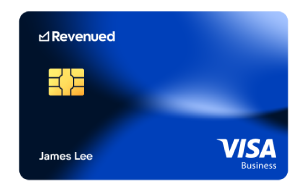So You Need to Create a Business Invoice? Here’s How (Including an Invoice Template)
So You Need to Create a Business Invoice? Here’s How (Including an Invoice Template)
To get paid for your products or services, it’s essential to understand how to create a business invoice that outlines the key financial components of your transaction. A properly created invoice will help your business get paid and will provide legal protection for both parties. Learning how to create an invoice for each of your customers while tracking outstanding and paid invoices may seem like a time-consuming task, but it’s an important part of running a business. In this post, you’ll learn how to make a business invoice, explore what needs to be on an invoice, and discover its broader legal and financial benefits beyond just receiving payment.
Types of Invoices
There are many types of invoices that are used across industries. Below are the six most common to help you understand what’s right for your business and customers.
- Bid invoice template: Use this type of invoice to clearly communicate your pricing proposal for a job or project before it begins.
- Interim invoice. This is an invoice issued at regular intervals during a longer-term project; it takes place instead of sending one final invoice. Interim invoices can be used monthly, weekly, quarterly, etc. from the start of the project.
- Recurring invoice. This format is best for your customers who are on a retainer or are using your services continuously. There is no definite end to the contract.
- Miscellaneous invoice. A general invoice will work well for any job, contract, or project that doesn’t fit a standardized service or product regularly provided by your business.
- Past due invoice. This acts as a notification when an account is past due. It includes outstanding costs for services provided, plus any accrued interest resulting in the unpaid balance.
-
Final invoice example: This document summarizes the remaining balance due after a project wraps, and may reflect interim payments already received. If there were any interim invoices issued, they will include a record of those payments previously received.
How to Create an Invoice
Take a look at an example invoice here. No matter the format, every invoice must include these core elements of an invoice to ensure clarity, legality, and timely payment.
- (Section 1) The client’s name, address, and contact person
- (Section 2) Your business name, address, phone number, and email address
- (Section 3) Invoicing number for tracking purposes
- (Section 4) Purchase order number, if applicable
- (Section 5) Current date
- (Section 6) A detailed itemized section describing each invoice for services provided or products delivered, including rates, quantities, service dates, and applicable taxes.
- (Section 7) Payment terms and acceptable methods of payment (for example, payable within 30 days via check, credit card, etc.)
Common Invoicing Mistakes
As a small business, especially one just starting out, you can’t afford to make mistakes on your invoices. Below are some common invoicing mistakes. Once you’re aware of them, they’re easy to fix or avoid.
- Not agreeing on terms. It’s critical to specify terms and provide a detailed breakdown of services and costs to help avoid any scope creep. It’s also important that the customer knows how much your services cost. Consider including a cost breakdown of your services in the event that scope creep occurs, so the customer understands the extra costs they would incur upfront.
- Waiting to invoice. Once you agree to the terms and the work is established, promptly send your invoice. Don’t wait for the customer to ask for the invoice — the responsibility for getting paid is yours. And the sooner you send that invoice, the sooner you get paid.
- Vague descriptions. It’s all about the details. Itemize your services and describe exactly what you executed. This will help your customers track, record, and report expenses, too. Also, don’t forget to include a specific payment due date.
- Not making it easy to pay. Let your customers know how they can pay you: via bank transfer, online payments, check, credit card, etc. The easier it is to pay you, the faster it will happen.
- Poor formatting and errors. Double-check that the dates are accurate, the invoice number is correct, and there aren’t any spelling mistakes. Proofread your invoices before sending them to your customer. Mistakes like this are more likely to happen when using Excel to create your invoices manually.
Invoices and Legal Rights
Invoices provide evidence that the products or services have been delivered and establish a company’s right to payment. If a customer doesn’t pay, the invoice can be used as a contract that will legally demonstrate to a court of law that a payment is owed. The business can also keep copies of invoices and amounts paid to contractors to establish that the services have been rendered and payment is completed.
Invoices as Audit Evidence
There is always a possibility that your business could be audited by the IRS. By using invoices, you can provide all reported income you received throughout the year in review. Organizing your invoices sequentially will help the review process and give confidence that your business has reported everything fully and correctly.
Invoicing vs. Purchase Orders and Bills
There is a difference between all three. Invoices can sometimes be confused with purchase orders (POs), but POs happen before the transaction, while invoices are sent after services are rendered. POs help record an order by a customer to a vendor or supplier, but an invoice acts more as a record of receipt. POs are often used as part of an approval process when getting vendors or suppliers involved.
A bill is more of a request for payment and is usually from a customer’s standpoint, whereas an invoice is created by a supplier. While an invoice is created before or after a product is received so the recipient can check off the items to ensure they are all there, a bill is usually given with the expectation of immediate payment.
Invoicing Software
There are many different types of invoicing software out there to help your business easily send and track invoices. Not only will the software save you time, but it will keep your invoices in one place, help you create presentable, consistent invoicing templates, and more. Some more popular programs are QuickBooks, FreshBooks, or Sighted. However, there are numerous options out there, so be sure to do your research to see what will work best for your business and customer base. Revenued is constantly expanding the range of offerings for clients. Be sure to visit our Marketplace page or apply for a Partnership to explore new opportunities.
RELATED ARTICLES
Tariffs and Small Business: Voices from Across America
Learn MoreHow Important Is It to Have Good Personal Credit as a Business?
Learn MoreExpenses Not To Be Charged on a Business Credit Card?
Learn MoreHow to Remove Hard and Soft Credit Inquiries from Your Report
Learn More
Boost your spending power with the Revenued Business Card
Only pay for what you use at gas stations, hotels, supply stores, supermarkets and more.
Take control with the Flex Line
Check your available balance online and request a cash draw with the tap of your finger, anytime.

